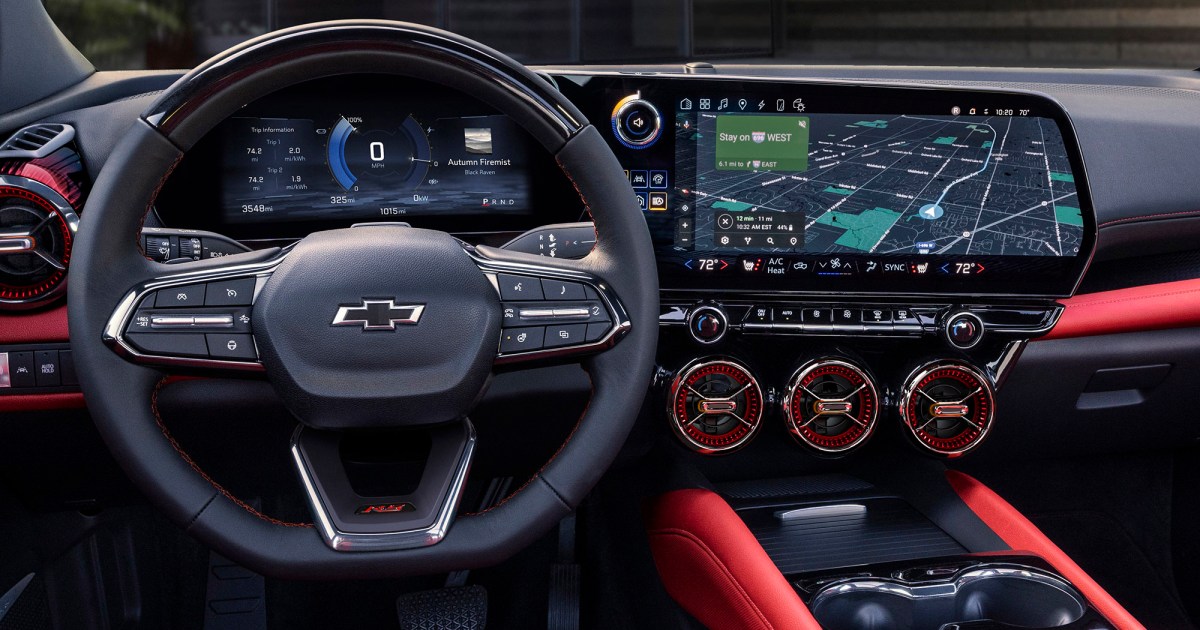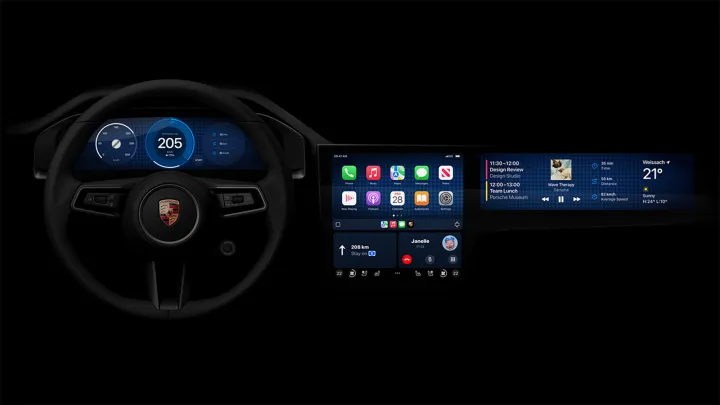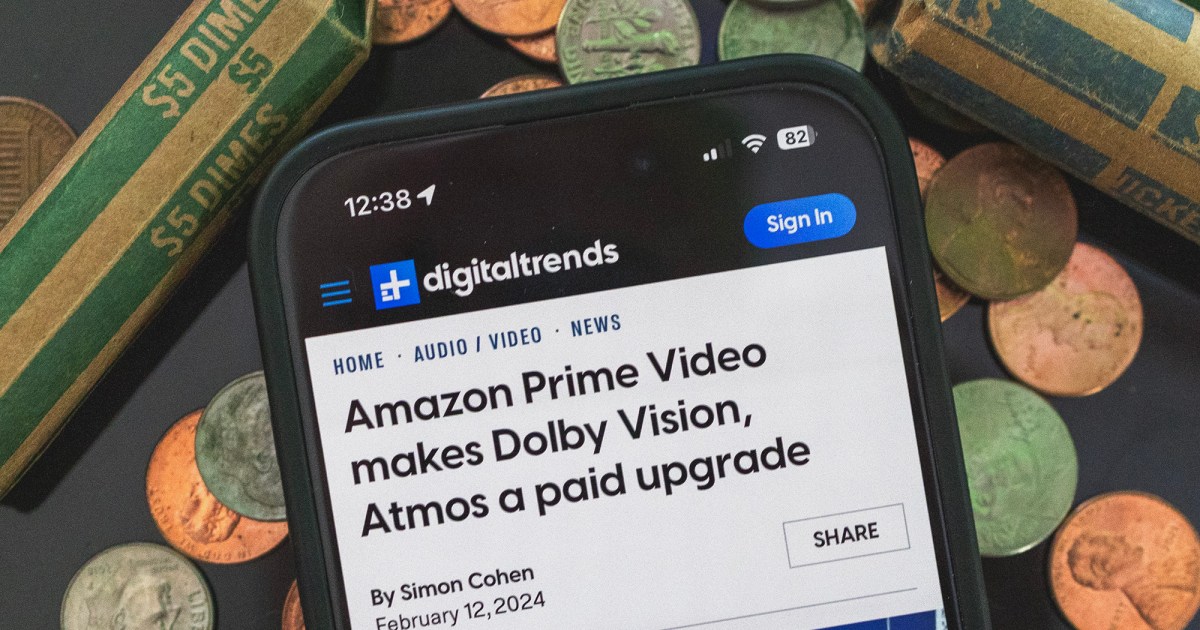

A lot enjoyable has been poked at Basic Motors over the ill-advised assertion from an government concerning GM’s resolution to eschew CarPlay and Android Auto in favor of its personal homegrown infotainment system. All of it surrounds statements by Tim Babbitt, GM’s head of product for infotainment, paraphrased by MotorTrend (there have been no direct quotes within the piece, save for a follow-up assertion from the corporate to attempt to tamp down the hearth), that principally referred to as methods like Google’s Android Auto and Apple’s CarPlay unhealthy and unsafe.
The lead perpetrator? These traces: “In response to him, there’s an essential issue that didn’t make it into the very fact sheet: security. Particularly, he cited driver distraction brought on by mobile phone utilization behind the wheel. In response to Babbitt, CarPlay and Android Auto have stability points that manifest themselves as unhealthy connections, poor rendering, gradual responses, and dropped connections.”
I ran an Android weblog for seven years throughout the platform’s heyday. I’ve used

However there’s a long-standing axiom that principally stays true at present: The built-in infotainment methods, usually talking, haven’t been pretty much as good or so simple as what you get with Android Auto or CarPlay. They have gotten higher over time — and the gradual shift to massive, capacitive touchscreens and precise UX (that’s person expertise, in business communicate) design has come a good distance, and we shouldn’t low cost that. However they haven’t been nice, and it’s simply not the identical form of integration we get with
Constructed-in infotainment methods have gotten higher lately, however there’s nonetheless room in your cellphone.
A few of that’s by design. Most auto producers transfer slowly due to the way in which that business largely works. That’s to not say they’re stagnant (corporations like Telsa and Rivian are proof of that), however they’re extraordinarily conservative, particularly on the subject of issues like driver security and distraction. They’re proper to be, and never simply due to the beautiful strict rules for that form of factor.
However what GM is doing in dropping help for each Android Auto and CarPlay is akin to throwing out the newborn with the bathwater. And in doing so, it’s obfuscating its actual grievance: shedding management over its infotainment stack — and which means shedding knowledge and, finally, cash.
What follows is an imperfect metaphor for apparent causes, however follow me right here:
Think about for a minute that you simply had been seeking to buy a brand new tv. It’s a reasonably large front room buy. Definitely not in the identical manner {that a} automobile is, nevertheless it’s not nothing. And it’s a product you’re anticipating to personal for a superb whereas.
However what if that tv was devoid of any HDMI ports. What if you happen to had been solely ready to make use of the software program, apps, and options that include that tv, all on the mercy of the producer.
Would you purchase that TV? Would you purchase a TV whose Netflix app simply wasn’t pretty much as good as what’s accessible on, say, Roku or Amazon Fireplace TV? Would you purchase a TV whose Netflix app doesn’t replace to maintain up with new options? Would you purchase a TV that locked you in to a single person expertise, regardless that all of the others have choices?

Would you purchase a tv whose person expertise is inferior to different choices — and one which doesn’t will let you use the rest?
Chances are high you wouldn’t. Not less than you shouldn’t. Not in a world wherein you will get one thing very usable for lower than $100 — as long as you’re in a position to plug it in to the TV.
By no means thoughts all of the press releases and commercials from the TV producer telling you the way nice and secure the built-in software program is. And like within the automobile business, the built-in methods from Samsung, LG, and Vizio (to call however three) have gotten a lot better. And whereas they’re extra than simply effective for people who don’t need to use the rest, they’re nonetheless not so good as most exterior choices — assume Roku, Amazon Fireplace TV, Chromecast with Google TV, or Apple TV. Neither is the {hardware} on which they run upgradeable, so that you’ll at all times be on the mercy of these chipsets tucked away contained in the TV. And so you continue to ought to be capable to use your personal units to increase your expertise with the TV, offered that they work in a secure and constant method.
The choice to make use of CarPlay and Android Auto at the side of built-in infotainment ought to stay an choice.
That’s what Android Auto and CarPlay do. They prolong the usefulness of the built-in infotainment system. They don’t completely usurp it. They don’t (at the moment) management the operation of the automobile themselves. (Whereas I’ll entertain the argument that they by no means ought to, I additionally haven’t personally used
At this level it’s value mentioning that there are GM vehicles — together with the brand new 2024 Blazer — which have “Google built-in.” That’s, the infotainment has entry to some Android apps, with out requiring your cellphone for something. It’s a part of
Whereas it’s definitely GM’s prerogative whether or not it needs to help CarPlay and Android Auto or not, it’s the shopper’s prerogative whether or not to purchase a automobile that lack these options. Simply as it’s their prerogative whether or not they’d purchase a TV with no HDMI ports. And in any case, this all doubtless shall be a moot level. If and when GM will get wind that prospects aren’t shopping for vehicles and vans with out CarPlay and
Editors’ Suggestions
Supply Hyperlink : Lowongan Kerja 2023


